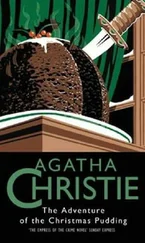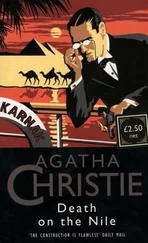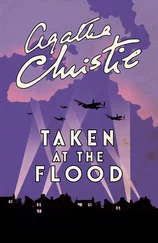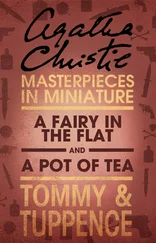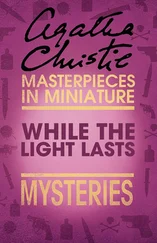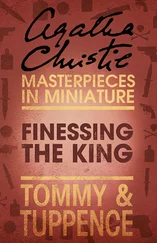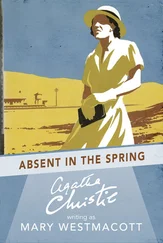Agatha Christie - While the light lasts
Здесь есть возможность читать онлайн «Agatha Christie - While the light lasts» весь текст электронной книги совершенно бесплатно (целиком полную версию без сокращений). В некоторых случаях можно слушать аудио, скачать через торрент в формате fb2 и присутствует краткое содержание. Жанр: Старинная литература, на английском языке. Описание произведения, (предисловие) а так же отзывы посетителей доступны на портале библиотеки ЛибКат.
- Название:While the light lasts
- Автор:
- Жанр:
- Год:неизвестен
- ISBN:нет данных
- Рейтинг книги:4 / 5. Голосов: 1
-
Избранное:Добавить в избранное
- Отзывы:
-
Ваша оценка:
- 80
- 1
- 2
- 3
- 4
- 5
While the light lasts: краткое содержание, описание и аннотация
Предлагаем к чтению аннотацию, описание, краткое содержание или предисловие (зависит от того, что написал сам автор книги «While the light lasts»). Если вы не нашли необходимую информацию о книге — напишите в комментариях, мы постараемся отыскать её.
While the light lasts — читать онлайн бесплатно полную книгу (весь текст) целиком
Ниже представлен текст книги, разбитый по страницам. Система сохранения места последней прочитанной страницы, позволяет с удобством читать онлайн бесплатно книгу «While the light lasts», без необходимости каждый раз заново искать на чём Вы остановились. Поставьте закладку, и сможете в любой момент перейти на страницу, на которой закончили чтение.
Интервал:
Закладка:
The third "treasure" was found by Mr. Herbert Elliot, a Manx-born ship's engineer living in Liverpool M. Elliot later claimed that he had not read "Manx Gold" nor even studied the clues, but had simply decided on a likely area where, very early on the morning of July 8, he chanced upon the snuffbox, hidden in a gully.
The principal clue to its whereabouts was hidden in the fourth clue, published on June 14 (the vers beginning "In '85, this place made history"), in which the second word of each line spells out the following message:
"85... paces... east... north... east... of... sacred... circle... Spanish... head.
" The "Sacred circle" is the Meayll circle on Mull Hill, a roegalithic monument a little over a mile from the Spanish Head, the most southerly point of the island. The reference to an important event "in '85" and a Spanish chestnut, which from contemporary accounts proved a diversion for many searchers, were false leads. As for "Kirkhill Station," the clue uncovered by Juan, Fenella rightly said that there was no such place. However, there is a village called Kirkhill and there is also a railway station at Port Erin, where Juan and Fenella had had lunch before starting their search. If a line is drawn from Kirkhill to Port Erin and continued southward, it eventually crosses the Meayll circle, "the exact spot" identified by Juan.
Unfortunately, as was the case with the clues to the location of the third snuffbox, those for the fourth were never solved. The fifth and final clue, the verse beginning "Upon a rock, a sign you'll see," was published on June 21, but on July 10, at the end of the extended period allowed for the hunt, which had originally been intended to finish at the end of June, the final "treasure" was "lifted" by the Mayor of Douglas. Two days later, as a "sequel" to the story, the Daily Dispatch published a photograph of the event and Christie's explanation of the final clue:
That last clue still makes me smile when I remember the time we wasted looking for rocks with a sign on them. The real clue was so simple - the words "sixes and sevens" in the covering letter.
Take the sixth and seventh words of each line of the verse, and you get this: "You'll see. Point of (A). Near the lighthouse a wall.
" See the point of (A) we identified as the Point of Ayre. We spent some time finding the right wall, and the treasure itself was not there. Instead, there were four figures - 2, 5, 6, and 9 scrawled on a stone.
Apply them to the letters of the first line of the verse, and you get the word "park.
" There is only one real park in the Isle of Man, at Ramsey. We searched that park, and found at last what we sought.
The thatched building in question was a small refreshment kiosk, and the path leading past it ran up to an ivy-covered wall, which was the hiding place of the elusive snuffbox. The fact that the letter had been posted in Bride was an additional clue, as this village is near the lighthouse at the Point of Ayre, the northern-most tip of the island.
It is impossible to judge whether or not "Manx Gold" was a successful means of promoting tourism on the Isle of Man. Certainly, it appears that there were more visitors in 1930 than in previous years, but how far that increase could be ascribed to the treasure hunt is far from clear. Contemporary press reports show that there were many who doubted that it had been of any real value, and at a civic lunch to mark the end of the hunt, Alderman Crookall responded to a vote of thanks by railing against those who had failed to talk up the hunt - they were "slackers and grousers who never did anything but offer up criticism."
The fact that they were not allowed to take part in the hunt might have been a cause of apathy among the islanders, even though the Daily Dispatch offered the Manx resident with whom each finder was staying a prize of five guineas, equivalent to about one hundred fifty pounds today. This also might have accounted for various acts of gentle "sabotage," such as the laying of false snuffboxes and spoof clues, including a rock on which the word "lift" was painted but under which was nothing more interesting than discarded fruit peel.
While there never has been any other event quite like the Isle of Man treasure hunt, Agatha Christie did go on to write mysteries with a similar theme. Most obvious of these is the challenge laid down to Charmian Stroud and Edward Rossiter by their eccentric Uncle Mathew in "Strange Jest," a Miss Marple story first published in 1941 as "A Case of Buried Treasure" and collected in Three Blind Mice (1948). There is also a similarly structured "murder hunt" in the Poirot novel Dead Man's Folly (1956).
WITHIN A WALL
It was Mrs. Lemprière who discovered the existence of Jane Haworth. It would be, of course. Somebody once said that Mrs. Lemprière was easily the most hated woman in London, but that, I think, is an exaggeration. She has certainly a knack of tumbling on the one thing you wish to keep quiet about, and she does it with real genius. It is always an accident.
In this case we had been having tea in Alan Everard's studio. He gave these teas occasionally, and used to stand about in corners, wearing very old clothes, rattling the coppers in his trouser pockets and looking profoundly miserable.
I do not suppose anyone will dispute Everard's claim to genius at this date. His two most famous pictures, Color and The Connoisseur, which belong to his early period, before he became a fashionable portrait painter, were purchased by the nation last year, and for once the choice went unchallenged. But at the date of which I speak, Everard was only beginning to come into his own, and we were free to consider that we had discovered him.
It was his wife who organized these parties. Everard's attitude to her was a peculiar one. That he adored her was evident, and only to be expected. Adoration was Isobel's due. But he seemed always to feel himself slightly in her debt. He assented to anything she wished, not so much through tenderness as through an unalterable conviction that she had a right to her own way. I suppose that was natural enough, too, when one comes to think of it.
For Isobel Loring had been really very celebrated. When she came out she had been the débutante of the season. She had everything except money; beauty, position, breeding, brains. Nobody expected her to marry for love. She wasn't that kind of girl. In her second season she had three strings to her bow, the heir to a dukedom, a rising politician, and a South African millionaire. And then, to everyone's surprise, she married Alan Everard - a struggling young painter whom no one had ever heard of.
It is a tribute to her personality, I think, that everyone went on calling her Isobel Loring. Nobody ever alluded to her as Isobel Everard. It would be: "I saw Isobel Loring this morning. Yes - with her husband, young Everard, the painter fellow."
People said Isobel had "done for herself.
" It would, I think, have "done" for most men to be known as "Isobel Loring's husband.
" But Everard was different. Isobel's talent for success hadn't failed her after all. Alan Everard painted Color.
I suppose everyone knows the picture: a stretch of road with a trench dug down it, and turned earth, reddish in color, a shining length of brown glazed drain-pipe and the huge navvy, resting for a minute on his spade - a Herculean figure in stained corduroys with a scarlet neckerchief. His eyes look out at you from the canvas, without intelligence, without hope, but with a dumb unconscious pleading, the eyes of a magnificent brute beast. It is a flaming thing - a symphony of orange and red. A lot has been written about its symbolism, about what it is meant to express. Alan Everard himself says he didn't mean it to express anything. He was, he said, nauseated by having had to look at a lot of pictures of Venetian sunsets, and a sudden longing for a riot of purely English color assailed him.
Читать дальшеИнтервал:
Закладка:
Похожие книги на «While the light lasts»
Представляем Вашему вниманию похожие книги на «While the light lasts» списком для выбора. Мы отобрали схожую по названию и смыслу литературу в надежде предоставить читателям больше вариантов отыскать новые, интересные, ещё непрочитанные произведения.
Обсуждение, отзывы о книге «While the light lasts» и просто собственные мнения читателей. Оставьте ваши комментарии, напишите, что Вы думаете о произведении, его смысле или главных героях. Укажите что конкретно понравилось, а что нет, и почему Вы так считаете.

